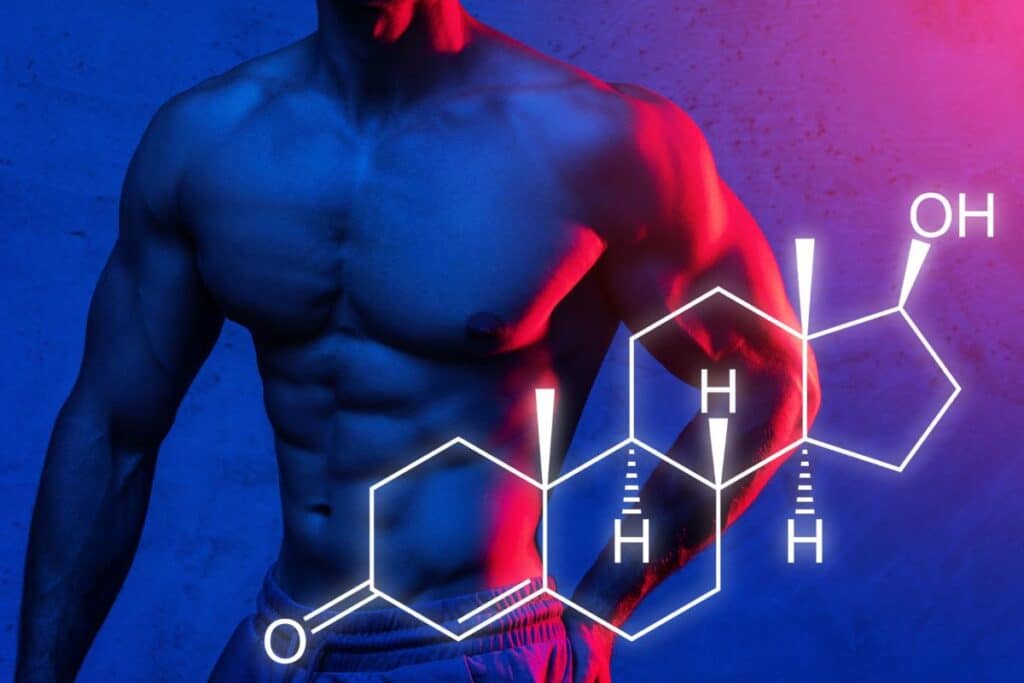Testosterone, often called the “male hormone,” is crucial in numerous physiological processes, including muscle growth, bone health, energy levels, and overall vitality. For those seeking to enhance testosterone production naturally, understanding the general principles of training, the organs responsible for its production, and the role of certain foods and exercises are paramount. In this article, we delve into these critical factors, empowering individuals to harness the power of testosterone for optimal well-being.
Training Principles that Favor Testosterone Production:
- Resistance Training: Engaging in regular strength and resistance training, such as weightlifting, stimulates muscle fibers and encourages testosterone release.
- Compound Movements: Incorporate compound exercises like squats, deadlifts, and bench presses. These exercises recruit multiple muscle groups, promoting higher testosterone levels.
- Progressive Overload: Gradually increasing the intensity and weight of your workouts challenges muscles, leading to greater testosterone secretion.
- Short Rest Periods: Keeping rest periods between sets relatively short can stimulate the release of testosterone, particularly in high-intensity training.
- Varied Workouts: Incorporate heavy, low-rep workouts and moderate-weight, high-rep workouts to optimize testosterone response.
Organs Responsible for Testosterone Production:
The testes in males and the ovaries in females are the primary organs responsible for testosterone production. The testes contain Leydig cells, which produce testosterone in response to luteinizing hormone (LH) stimulation from the pituitary gland.
Foods and Exercises that Enhance Testosterone Production:
Foods:
- Healthy Fats: Foods rich in healthy fats like avocados, nuts, seeds, and olive oil support testosterone production.
- Protein: Adequate protein intake aids muscle growth and hormone synthesis.
- Zinc: Zinc-rich foods like oysters, lean meats, and whole grains are essential for testosterone production.
- Vitamin D: Sunlight exposure and vitamin D-rich foods like fatty fish contribute to healthy testosterone levels.
- Cruciferous Vegetables: Broccoli, cauliflower, and Brussels sprouts contain compounds that may help balance hormones.
- Fruits: Pomegranates and berries are packed with antioxidants that support overall hormonal health.
Exercises:
- High-Intensity Interval Training (HIIT): Short bursts of intense activity followed by rest periods can increase testosterone levels.
- Compound Exercises: As mentioned earlier, exercises involving multiple muscle groups effectively boost testosterone.
- Sprint Training: Incorporating sprints into your cardio routine can promote testosterone release.
- Heavy Lifting: Lifting heavy weights with proper form encourages testosterone production.
Holistic Approach to Testosterone Enhancement:
It’s important to note that the pursuit of optimal testosterone levels involves more than just training and diet. Stress management, quality sleep, and overall well-being play significant roles in maintaining hormonal balance. Chronic stress can lead to elevated cortisol levels, suppressing testosterone production.
Conclusion: Harnessing the Power of Testosterone Naturally
Understanding the interplay between training, organs, foods, and exercises about testosterone production empowers individuals to make informed decisions about their fitness journeys. By adopting a comprehensive approach encompassing strength training, balanced nutrition, and overall well-being, enthusiasts can optimize their testosterone levels for enhanced muscle growth, energy, and overall vitality.
As with any lifestyle changes, it’s advisable to consult a healthcare professional before significantly altering your exercise or dietary regimen, especially if you have underlying health conditions. If you love bodybuilding, share this article on Facebook or Twitter so that others can learn more about building muscle.




